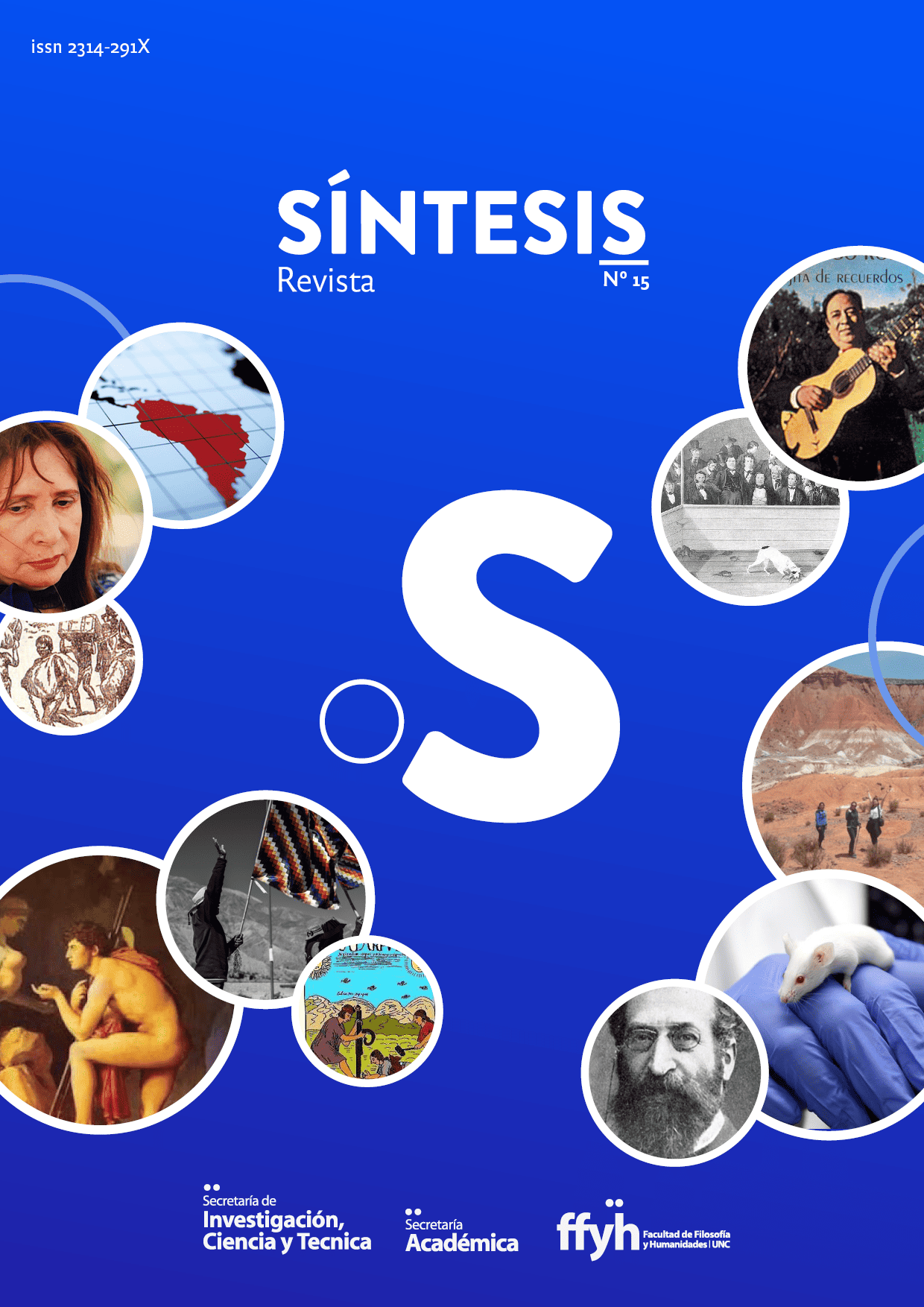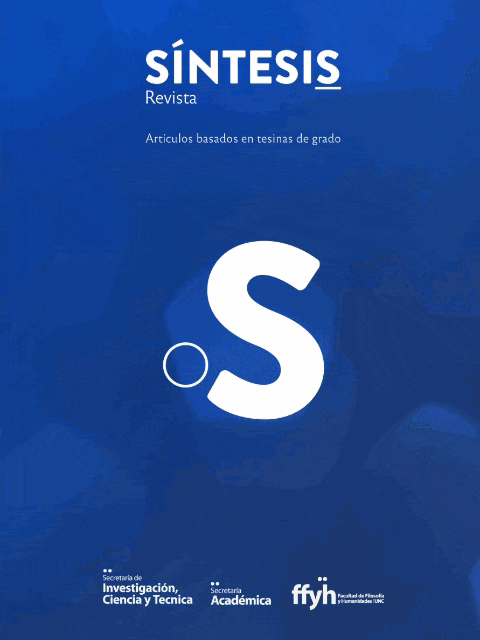How rats conquered labs
(or how scientists conquered them)
Keywords:
model organisms, laboratory rats, standardization, history and philosophy of biology, science and technology studiesAbstract
This article explores some philosophical problems of experimental scientific practices with laboratory rats (Rattus norvegicus). This species has become indispensable in life sciences, comprising over 90% of organisms employed in some disciplines. Through experimentation, scientists intend to extrapolate results to other species, notably Homo sapiens.
The success of laboratory rats necessitates exploring why and how certain organisms are used as models. Analyzing the emergence of model organisms and their contemporary use, this study reveals insights into the use of models in science, highlighting historical and communal factors influencing their choice. The evolution of Rattus norvegicus from a synanthropic species to a highly adapted experimental model underscores the complex interplay between human-animal interactions and scientific inquiry. Ultimately, this analysis intends to enrich our understanding of scientific modeling practices, emphasizing the need to draw on a multiplicity of approaches to shape a perspective sensitive to the history of science, the philosophy of models and experimentation, and the analysis of biological theories.
Downloads
References
Barnett, S. A. (2002). The story of rats: Their impact on us, and our impact on them. Allen & Unwin.
Beery, A. K., y Zucker, I. (2011). Sex bias in neuroscience and biomedical research. Neuroscience & Biobehavioral Reviews, 35(3), 565–572. https://doi.org/10/ff34pz
Berkenhout, J. (1769). Outlines of the natural history of Great Britain and Ireland. Elmsly.
Bloor, D. (1976). Knowledge and Social Imagery. University of Chicago Press.
Churchill, F. B. (1997). Life Before Model Systems: General Zoology at August Weismann’s Institute. American Zoologist, 37(3), 260–268. https://doi.org/10.1093/icb/37.3.260
Clause, B. T. (1993). The Wistar rat as a right choice: Establishing mammalian standards and the ideal of a standardized mammal. Journal of the History of Biology, 26(2), 329–349. https://doi.org/10.1007/BF01061973
de Chadarevian, S. (1993). Graphical method and discipline: Self-recording instruments in nineteenth-century physiology. Studies in History and Philosophy of Science Part A, 24(2), 267–291. https://doi.org/10.1016/0039-3681(93)90048-O
Dietrich, M. R., Ankeny, R. A., y Chen, P. M. (2014). Publication Trends in Model Organism Research. Genetics, 198(3), 787–794. https://doi.org/10.1534/genetics.114.169714
Donaldson, H. H. (1915). The rat: Reference tables and data for the albino rat (Mus norvegicus albinus) and the Norway rat (Mus norvegicus) (1ra ed.). Wistar Institute of Anatomy and Biology.
Donaldson, H. H. (1924). The rat: Data and reference tables for the albino rat (Mus norvegius albinus) and the Norway rat (Mus norvegius) (2da ed.). Wistar Institute of Anatomy and Biology.
Fine, A. (1993). Fictionalism. Midwest Studies in Philosophy, 18(1), 1–18. https://doi.org/10.1111/j.1475-4975.1993.tb00254.x
Godfrey-Smith, P. (2007). The strategy of model-based science. Biology & Philosophy, 21(5), 725–740. https://doi.org/10/b4pf9s
Goodman, N. (2010). Los Lenguajes del Arte: Aproximación a la teoría de los símbolos. Paidós. (Obra original publicada en 1968)
Gossel, P. P. (1992). A Need for Standard Methods: The Case of American Bacteriology. En A. E. Clarke y J. H. Fujimura (Eds.), The Right Tools for the Job (pp. 287–311). Princeton University Press. https://doi.org/10.1515/9781400863136.287
Gravinatti, M. L., Barbosa, C. M., Soares, R. M., y Gregori, F. (2020). Synanthropic rodents as virus reservoirs and transmitters. Revista Da Sociedade Brasileira de Medicina Tropical, 53, e20190486. https://doi.org/10.1590/0037-8682-0486-2019
Green, S., Dietrich, M. R., Leonelli, S., & Ankeny, R. A. (2018). ‘Extreme’ organisms and the problem of generalization: Interpreting the Krogh principle. History and Philosophy of the Life Sciences, 40(4), 65. https://doi.org/10/ghpcgx
Greenman, M. J. (1908). Director’s Report of 1908. Wistar Institute Library.
Griesemer, J. R. (1990). Material Models in Biology. PSA: Proceedings of the Biennial Meeting of the Philosophy of Science Association, 1990(2), 79–93. https://doi.org/10.1086/psaprocbienmeetp.1990.2.193060
Hacking, I. (1983). Representing and Intervening: Introductory Topics in the Philosophy of Natural Science. Cambridge University Press.
Haraway, D. J. (2021). Testigo_Modesto@Segundo_Milenio.HombreHembra©_Conoce_OncoRata®. Rara Avis.
Heredia, I. (2023). Rattus norvegicus albinus: Estandarización y elección de la rata de laboratorio como organismo modelo [Trabajo Final de Licenciatura]. Universidad Nacional de Córdoba.
Hulme-Beaman, A., Orton, D., y Cucchi, T. (2021). The origins of the domesticate brown rat (Rattus norvegicus) and its pathways to domestication. Animal Frontiers: The Review Magazine of Animal Agriculture, 11(3), 78–86. https://doi.org/10.1093/af/vfab020
Johnston, R. F. (2001). Synanthropic birds of North America. En J. M. Marzluff, R. Bowman, y R. Donnelly (Eds.), Avian Ecology and Conservation in an Urbanizing World (pp. 49–67). Springer US. https://doi.org/10.1007/978-1-4615-1531-9_3
Jørgensen, C. B. (2001). August Krogh and Claude Bernard on Basic Principles in Experimental Physiology. BioScience, 51(1), 59. https://doi.org/10/fbxbv4
Krebs, H. A. (1975). The August Krogh principle: “For many problems there is an animal on which it can be most conveniently studied”. Journal of Experimental Zoology, 194(1), 221–226. https://doi.org/10/bw8ccp
Krogh, A. (1929). The Progress of Physiology. American Journal of Physiology-Legacy Content, 90(2), 243–251. https://doi.org/10/gngrmj
Latour, B., y Woolgar, S. (1979). Laboratory life: The social construction of scientific facts. Sage Publications.
Levy, A., y Currie, A. (2015). Model Organisms are Not (Theoretical) Models. The British Journal for the Philosophy of Science, 66(2), 327–348. https://doi.org/10/gmv82s
Lockard, R. B. (1968). The Albino Rat: A Defensible Choice or a Bad Habit? The American Psychologist, 23(10), 734-742. https://doi.org/10.1037/h0026726
Logan, C. A. (1999). The Altered Rationale for the Choice of a Standard Animal in Experimental Psychology. History of Psychology, 2(1), 23.
Logan, C. A. (2002). Before There Were Standards: The Role of Test Animals in the Production of Empirical Generality in Physiology. Journal of the History of Biology, 35(2), 329–363. https://doi.org/10.1023/a:1016036223348
Ness, R. W., Zhang, Y.-H., Cong, L., Wang, Y., Zhang, J.-X., y Keightley, P. D. (2012). Nuclear Gene Variation in Wild Brown Rats. G3: Genes|Genomes|Genetics, 2(12), 1661–1664. https://doi.org/10.1534/g3.112.004713
Pauly, P. J. (1987). Controlling life: Jacques Loeb and the engineering ideal in biology. Oxford University Press.
Pennant, T., y Stejneger, L. (1768). British zoology (pp. 1-282). Printed for Benjamin White. https://doi.org/10.5962/bhl.title.62499
Pickering, A. (Ed.). (1992). Science as practice and culture. University of Chicago Press.
Puckett, E. E., Orton, D., & Munshi-South, J. (2020). Commensal Rats and Humans: Integrating Rodent Phylogeography and Zooarchaeology to Highlight Connections between Human Societies. BioEssays: News and Reviews in Molecular, Cellular and Developmental Biology, 42(5), e1900160. https://doi.org/10.1002/bies.201900160
Rat-baiting. (2024). En Wikipedia. https://en.wikipedia.org/w/index.php?title=Rat-baiting&oldid=1227369359
Richter, C. P. (1954). The Effects of Domestication and Selection on the Behavior of the Norway Rat. JNCI: Journal of the National Cancer Institute, 15(3), 725-738. https://doi.org/10.1093/jnci/15.3.725
Robinson, R., y Kerkut, G. A. (2014). Genetics of the Norway Rat: International Series of Monographs in Pure and Applied Biology. Elsevier Science. https://public.ebookcentral.proquest.com/choice/publicfullrecord.aspx?p=1817596 (Obra original publicada en 1965)
Rutty, J. (1772). An essay towards a natural history of the county of Dublin, accommodated to the noble designs of the Dublin society. Printed by W. Sleater for the author. https://catalog.hathitrust.org/Record/008596546
Sinclair, B. (1969). At the Turn of a Screw: William Sellers, the Franklin Institute, and a Standard American Thread. Technology and Culture, 10(1), 20. https://doi.org/10.2307/3102001
Sober, E. (1988). Reconstructing the past: Parsimony, evolution, and inference. MIT Press.
Suárez, M. (Ed.). (2009). Fictions in science: Philosophical essays on modeling and idealization. Routledge.
Taylor, F. W. (1911). Shop management. Harper & Brothers. http://archive.org/details/shopmanagement01tayl (Obra original publicada en 1903)
Teng, H., Zhang, Y., Shi, C., Mao, F., Cai, W., Lu, L., Zhao, F., Sun, Z., y Zhang, J. (2017). Population Genomics Reveals Speciation and Introgression between Brown Norway Rats and Their Sibling Species. Molecular Biology and Evolution, 34(9), 2214–2228. https://doi.org/10.1093/molbev/msx157
Varudkar, A., y Ramakrishnan, U. (2015). Commensalism facilitates gene flow in mountains: A comparison between two Rattus species. Heredity, 115(3), Article 3. https://doi.org/10.1038/hdy.2015.34
Weber, M. (2004). Philosophy of Experimental Biology. Cambridge University Press.
Zeder, M. A. (2012). The Domestication of Animals. Journal of Anthropological Research, 68(2), 161–190. https://doi.org/10.3998/jar.0521004.0068.201
Downloads
Published
License
Copyright (c) 2024 Síntesis

This work is licensed under a Creative Commons Attribution-NonCommercial-NoDerivatives 4.0 International License.




